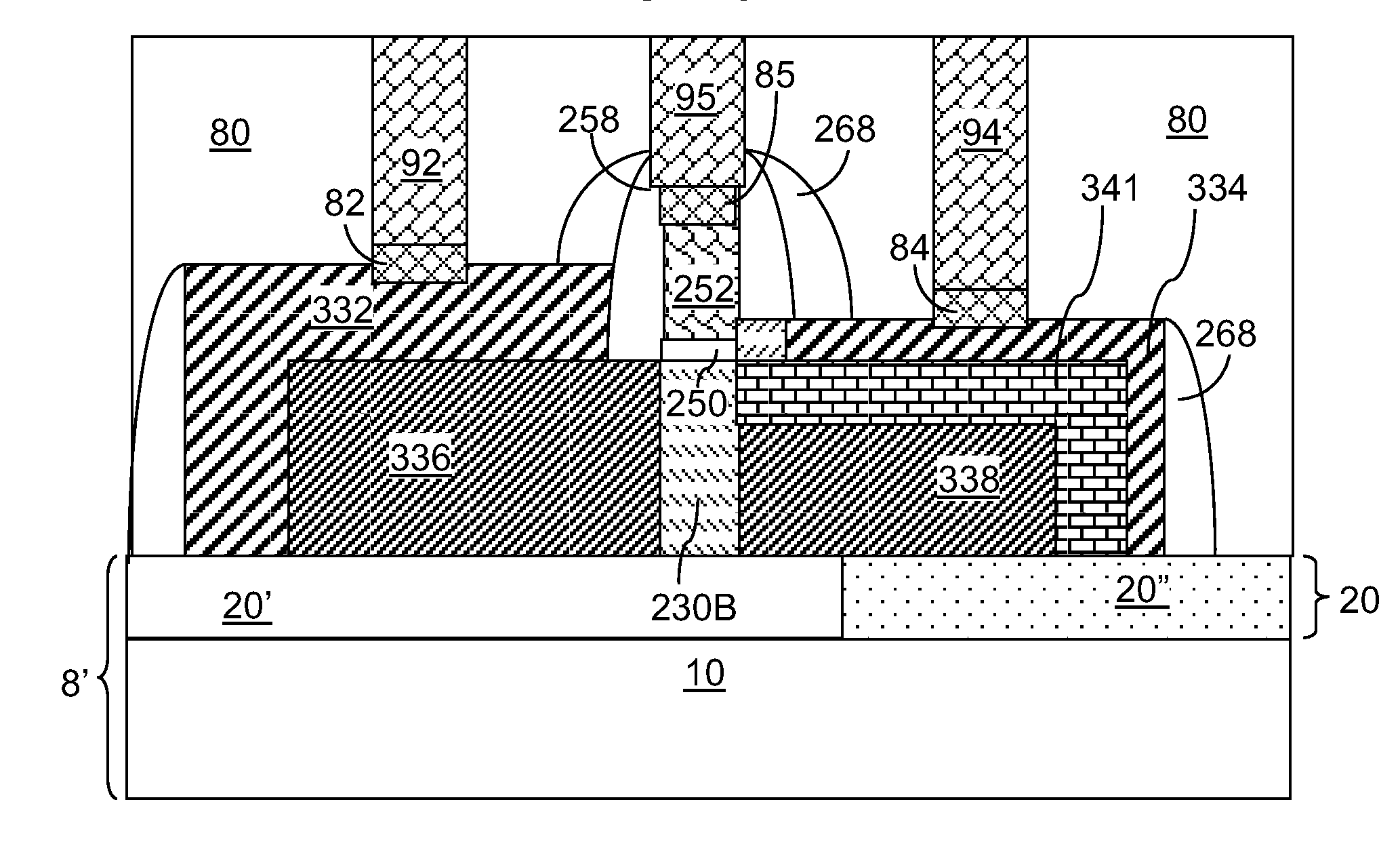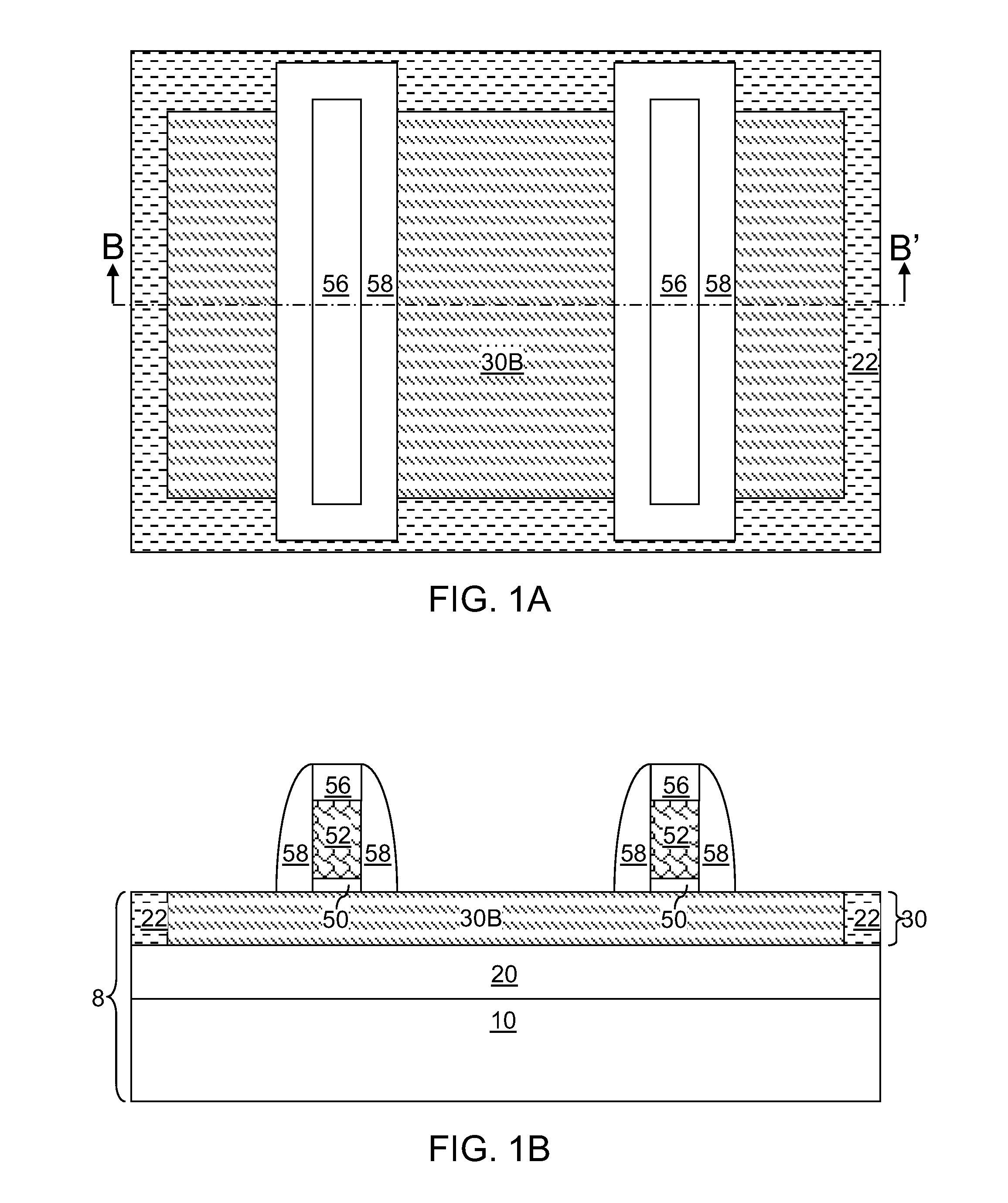Mosfet including asymmetric source and drain regions
a technology of mosfet and drain region, which is applied in the field of mosfet including asymmetric source and drain region, can solve the problem that the overlap capacitance between the gate electrode and the source extension region of the field effect transistor does not provide a corresponding benefit, and achieves less drain-side overlap capacitance, less source-side external resistance, and greater thickness
- Summary
- Abstract
- Description
- Claims
- Application Information
AI Technical Summary
Benefits of technology
Problems solved by technology
Method used
Image
Examples
first embodiment
[0023]Referring to FIGS. 1A and 1B, a first exemplary semiconductor structure according to the present invention includes a semiconductor substrate 8 and gate structures formed thereupon. The semiconductor substrate 8 can be a semiconductor-on-insulator (SOI) substrate including a stack, from bottom to top, of a handle substrate 10, a buried insulator layer 20, and a top semiconductor layer 30. Alternately, the semiconductor substrate 8 can be a bulk substrate including a semiconductor material therein.
[0024]The semiconductor substrate 8 includes a semiconductor material region having an exposed top semiconductor surface. If the semiconductor substrate 8 is an SOI substrate, the semiconductor material region can be located in the top semiconductor layer 30. If the semiconductor substrate 8 is a bulk semiconductor substrate (not shown), the semiconductor material portion can be a top portion of the bulk semiconductor substrate. Shallow trench isolation structures 22 including a diele...
third embodiment
[0090]Referring to FIGS. 11A and 11B, a third exemplary semiconductor structure according to the present disclosure can be derived from the second exemplary semiconductor structure of FIGS. 7A, 7B, and 7C by selectively depositing an intrinsic semiconductor material instead of an in-situ doped semiconductor material. Specifically, selective epitaxy is performed to deposit an intrinsic semiconductor material on the exposed semiconductor surfaces of the structurally damaged regions 239 (See FIGS. 7A, 7B, and 7C) and the semiconductor fin portions 230. Because the structurally damaged regions 239 include surface defects that impede the mobility of adatoms from the reactant, an epitaxial semiconductor material portion deposited on the structurally damaged regions 239 has a lesser thickness than another epitaxial semiconductor material portion deposited directly on the semiconductor fin portions 230.
[0091]Because the selective epitaxy is performed at an elevated temperature that is suffi...
PUM
 Login to View More
Login to View More Abstract
Description
Claims
Application Information
 Login to View More
Login to View More - R&D
- Intellectual Property
- Life Sciences
- Materials
- Tech Scout
- Unparalleled Data Quality
- Higher Quality Content
- 60% Fewer Hallucinations
Browse by: Latest US Patents, China's latest patents, Technical Efficacy Thesaurus, Application Domain, Technology Topic, Popular Technical Reports.
© 2025 PatSnap. All rights reserved.Legal|Privacy policy|Modern Slavery Act Transparency Statement|Sitemap|About US| Contact US: help@patsnap.com



